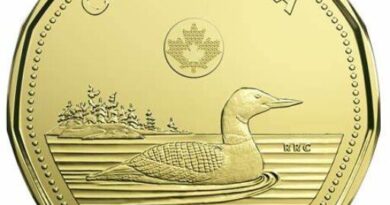Trade Balance and the Canadian Dollar: Unraveling the Connection
In the complex landscape of international trade, few currencies exhibit the deeply intimate relationship between economic indicators and market dynamics as vividly as the Canadian Dollar(CAD). The trade balance, a fundamental metric reflecting the difference between a nation’s exports and imports, stands as a crucial player in influencing the valuation of the Canadian Dollar. In this comprehensive exploration, we delve into the intricate connection between the trade balance and the Canadian Dollar, unraveling the factors that intricately link these two elements in the dynamic world of foreign exchange.
Understanding the Trade Balance
Definition and Calculation:
At its core, the trade balance represents the net difference between a country’s exports and imports of goods and services. A positive trade balance, often referred to as a trade surplus, occurs when a nation exports more than it imports, contributing positively to its economic health. Conversely, a negative trade balance or trade deficit arises when a nation imports more than it exports, potentially signaling economic challenges.
Components of the Trade Balance:
To unravel the connection between the trade balance and the Canadian Dollar, it’s essential to understand the components that contribute to this economic indicator. The trade balance encompasses not only goods but also services, highlighting the diverse range of economic activities that influence a nation’s overall trade position.

The Impact of Trade Balance on the Canadian Dollar
Trade Surplus and Currency Appreciation:
A trade surplus, where exports exceed imports, often has a positive impact on the Canadian Dollar. The increased demand for the nation’s goods and services boosts its currency’s value. Investors and traders view a trade surplus as a sign of economic strength, fostering confidence in the Canadian Dollar and potentially leading to appreciation against other currencies.
Trade Deficit and Currency Depreciation:
Conversely, a trade deficit, characterized by higher imports than exports, can contribute to the depreciation of the Canadian Dollar. A negative trade balance may signal economic challenges, potentially leading to reduced confidence in the currency. Understanding how a trade deficit influences investor sentiment is crucial for unraveling the connection between the trade balance and the Canadian Dollar.
Factors Influencing the Trade Balance
Exchange Rates:
Exchange rates play a pivotal role in shaping a nation’s trade balance. A weaker Canadian Dollar can make exports more competitive in international markets, potentially contributing to a trade surplus. Conversely, a stronger Canadian Dollar may make imports more attractive, impacting the trade balance. Analyzing the interplay between exchange rates and the trade balance is essential for unraveling the broader economic implications.
Global Economic Conditions:
The health of the global economy significantly influences Canada’s trade balance. During periods of global economic growth, demand for Canadian exports may rise, contributing to a positive trade balance. Conversely, economic downturns can lead to reduced demand for Canadian goods and services, impacting the trade balance and subsequently affecting the Canadian Dollar’s valuation.
Trade Agreements and Policy Impact
NAFTA/USMCA and Trade Dynamics:
Canada’s trade balance is deeply intertwined with its trade agreements, notably the North American Free Trade Agreement (NAFTA), now succeeded by the United States-Mexico-Canada Agreement (USMCA). The terms of these agreements influence the flow of goods and services, directly impacting the trade balance and, consequently, the Canadian Dollar.
Tariffs and Trade Policy:
Changes in trade policies, including the imposition of tariffs, can have profound effects on a nation’s trade balance. Examining how trade policy decisions impact Canada’s exports and imports provides a nuanced understanding of the broader implications for the Canadian Dollar.
In the intricate dance of global trade and economic indicators, the trade balance stands as a pivotal player in shaping the destiny of the Canadian Dollar. Unraveling the connection between the two involves a multifaceted exploration of economic principles, market dynamics, and policy decisions. As we navigate the evolving landscape of international trade, understanding how the trade balance influences the Canadian Dollar remains integral to making informed decisions in the dynamic world of foreign exchange. The journey of the Loonie, intricately tied to the ebb and flow of trade balances, continues to unfold within the broader narrative of Canada’s economic landscape.



